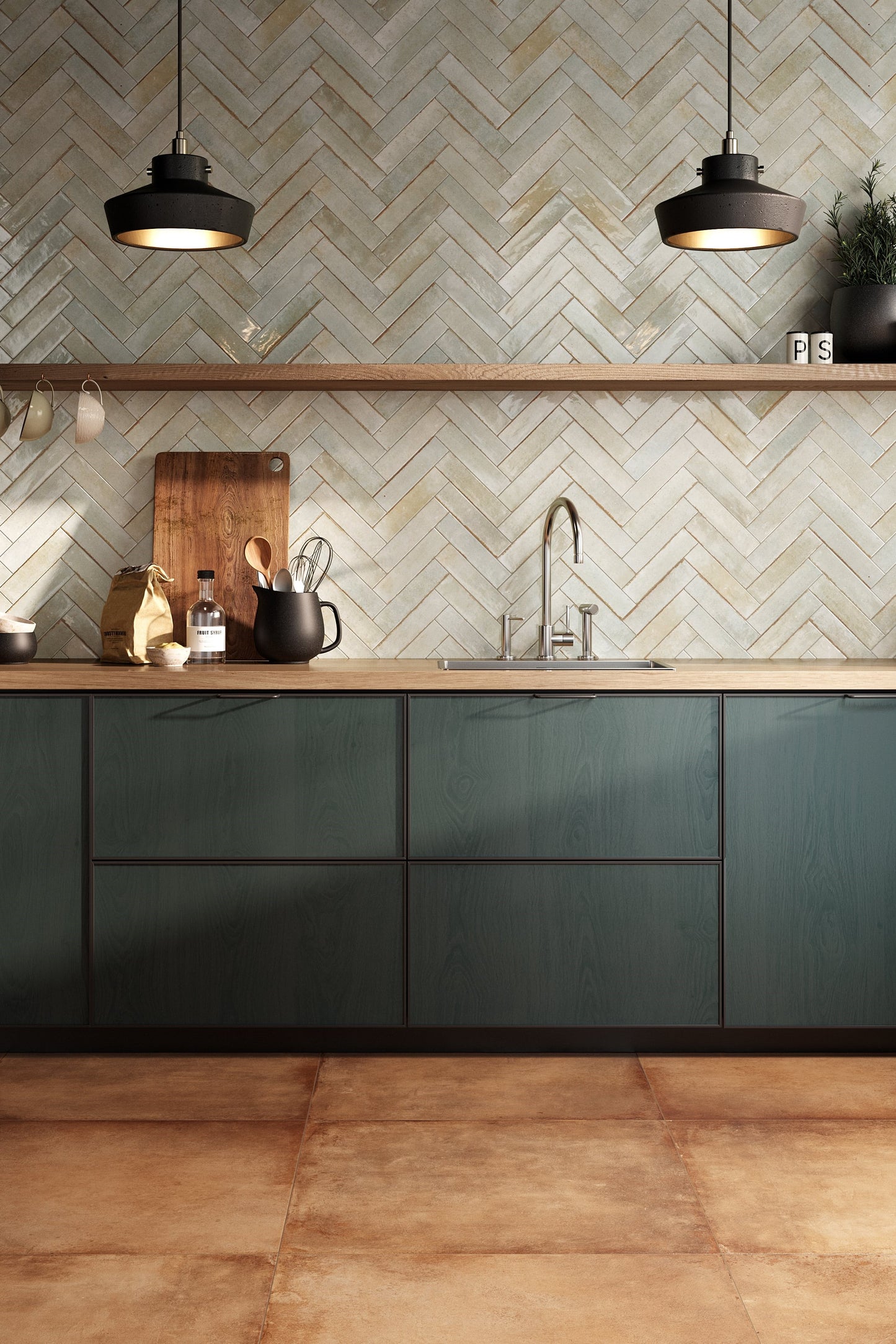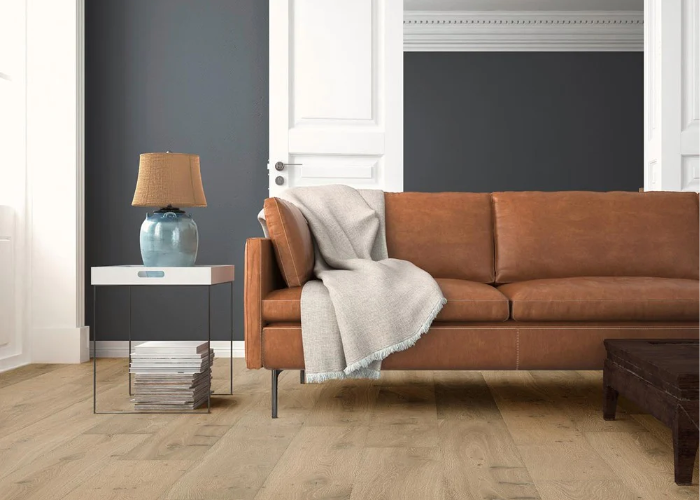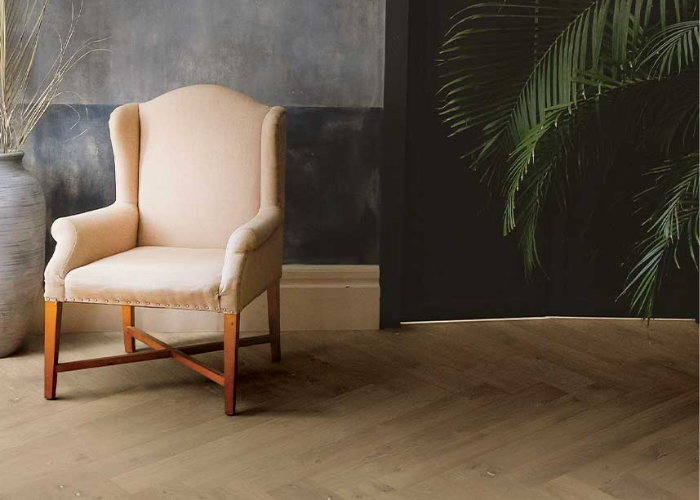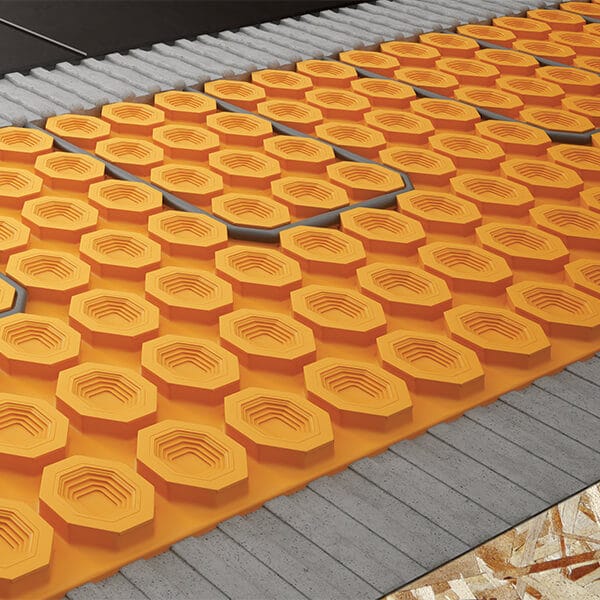
Debunking Anti-Slip Tiles!
Let's debunk a common misconception right from the start – there is no such thing as "anti-slip" when it comes to tiles. No surface can guarantee complete slip resistance, regardless of its grip level. What we focus on is minimizing the risk of slipping by assessing the slip rating of tiles. However, it's important to note that various international standards exist for measuring slip resistance, leading to different rating systems without a single unified scale.
In this article, we aim to demystify the various ratings, explain their significance, and clarify the typical intended uses for tiles falling within different rating bands. Understanding these ratings will help you make informed decisions when selecting tiles for your specific applications. So, let's dive in!
Ramp Testing for R Ratings
When it comes to assessing the slip resistance of tiles, the "ramp test" is the most commonly understood method. This test yields an R-Value ranging from R9 to R13, representing the angle at which slip begins to occur. European tile manufacturers typically use this method, making slip resistance information readily available to consumers. The "ramp test" (DIN51130) is performed as a "shod foot test," where an individual walks on a wet surface wearing cleated safety boots, held by a harness. The angle of the ramp is adjusted, and the degree of slip generates the R-Value.
Here are the R-Value ratings along with their respective slip angles, wet slip risk, and suitability:
|
R-Value |
Slip Angle (degrees) | Wet Slip Risk | Suitability |
| R9 | 6-10 | High Risk | Dry Areas |
| R10 | 10-19 | Moderate | Areas kept mostly dry |
| R11 | 19-27 | Moderate | Can be occasionally wet |
| R12 | 27-35 | Low Risk | Commercial Wet areas |
| R13 | 35 | Low Risk | Very wet commercial areas |
Ramp Testing for ABC Ratings
However, one significant issue with the above rating system is that it doesn't consider situations where we are barefoot. A similar test is conducted for internal uses where bare feet are common, with individuals walking on a wet surface barefoot. This test provides a different rating (A, B, C) that is more relevant for situations where grip is needed without shoes.
Here are the ABC ratings along with their suitability:
|
ABC Rating |
Slip Angle (degrees) |
| A | Dry barefoot areas (domestic use, kitchen, living rooms, bathroom) |
| B | Pool surrounds & showers |
| C | Commercial pools, jacuzzi’s & gym showers |
Ramp Testing Conclusion
To summarize the implications of these ratings, you need to consider the application and what you'll be wearing on your feet:
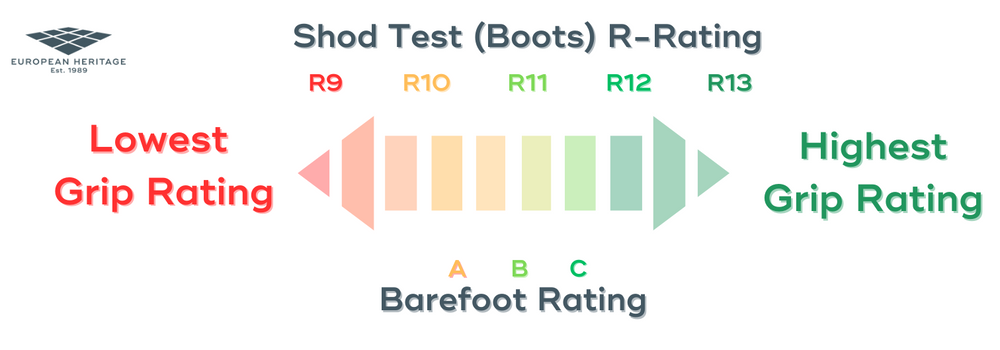
- If you're concerned about slipping while wearing shoes, such as outside, an R11 rated tile may be a suitable choice.
- If you require better grip for bare feet, you might want to focus on the ABC rating.
It's worth noting that a tile can have multiple ratings, such as R10 + A + B. While this may not be ideal for outdoor use with shoes on (due to the R10 rating), it's a sensible choice for a wet room, as it has the important "B" rating for bare feet.
Remember, understanding the specific ratings and their implications will help you select the right tiles for your intended application, ensuring safety and peace of mind.
Pendulum Testing for PTV Ratings
The Pendulum or "Coefficient of Friction" test offers a unique perspective on tile slip resistance by simulating the motion of a slipping foot and assessing the tile's ability to resist that slip. This test generates a value known as the Pendulum Test Value (PTV 0 - 100) or Dynamic Coefficient of Friction (DcoF 0 - 1). They may be written slightly different, but mean the same thing. For example a PTV > 42 is the same as DcoF >0.42.
While it differs from the previously mentioned "ramp test" and "ABC rating," its values can be directly compared to them. The PTV test has gained popularity in recent years for assessing tile suitability in specific applications, especially in commercial settings like restaurants, where architects and designers seek a PTV of 36+ for enhanced safety. Additionally, domestically, a PTV of 36+ or DcoF > 0.36 is the ideal choice for wetroom and external tiling projects.
Although not all manufacturers may conduct the PTV test, its significance in evaluating slip resistance makes it a valuable consideration in your tile selection process.
|
Slip Potential |
PTV |
| High slip potential | 0-24 |
| Moderate slip potential | 25-35 |
| Low slip potential | 36 + |
What does all of this mean for your application?
Navigating through these statistics and testing methods might initially appear mundane and slightly perplexing. Nonetheless, they play a crucial role in enabling us to provide you with valuable insights. It's essential to grasp that the various ratings and values are not set in stone for domestic clients; instead, they can be tailored to match your specific application or environment. While grippier tiles offer enhanced safety, they can also feel rougher and require more maintenance due to their ability to hold dirt.
Taking a look at how all these ratings map out can help you choose the right tile for your project. Consider your setting and grip requirements and check your tile selection meets your needs.

|
R-Value |
PTV |
| R9 | 18-34 |
| R10 | 18-34 |
| R11 | 34-51 |
| R12 | 51-70 |
| R13 | 70+ |
| ABC-Value (Bare Foot) | PTV |
| A | 21-31 |
| B | 32-42 |
| C | 42+ |
As we delve deeper into the subject, we'll uncover applications that are particularly relevant to domestic renovations, helping you make informed decisions for your tiling projects.
Setting #1 – Wetroom Floor Application
With the growing popularity of modern wetroom designs, prioritising a safe surface for bare feet in wet and soapy conditions is paramount. To ensure an ideal slip resistance rating for wetrooms, we highly recommend opting for a tile with a barefoot rating of A+B or a PTV exceeding 36 / DcoF > 0.36.
In a practical example, you may be choosing between two tiles.
- Option 1 has an R9 A+B rating with a PTV > 42
- Option 2 has an R10 A rating with a PTV > 36
So what does this mean? Interpreting these ratings, option 1 would be better in wet areas with bare feet, but option 2 would stand up better if you were wearing shoes.
The good news is that numerous tile ranges now offer such classifications, making it less of a compromise in aesthetics than it once was. Rest assured, we have the perfect tile options to complement your modern wetroom, combining both safety and style flawlessly.
Setting #2 – Indoor-to-Outdoor Continuation
The concept of having the same tile flowing from the Kitchen/Living space through to the exterior garden, appeals to many of our clients in the midst of a renovation. Many of our ranges now come with a natural finish (suitable for interior use) and an anti-slip finish (exterior use). Farmhouse is a wonderful new reclaimed limestone effect range with an interior finish (R10A) that has a matching exterior tile (R11A+B).
What was once a near impossible task of finding a large tile in an R11 texture, our manufacturers are now producing the grip finishes in very large formats. We have a new range that is now produced in large formats - 90x90cm & 120x120cm. Check out our Detroit collection for a range that has a sleek industrial feel, neutral colours and the two finishes that make your internal-to-external transition seamless.
As is the case with many things in our lives, we are lucky enough to have an ever-improving choice of products & materials. As technology improves, so does our selection of porcelain stoneware. Our knowledgeable staff are on hand to advise you on the necessary surfaces required for your project.
Wrapping up!
We have debunked the notion of "anti-slip" tiles, recognising that no surface can ensure complete slip resistance. Instead, our focus lies in minimising slip risks by assessing the slip ratings of tiles. Throughout this article, we have demystified the various testing methods and rating systems, shedding light on their significance and practical applications for different settings. Understanding these ratings empowers you to make informed decisions when selecting tiles that best suit your specific needs.
The "ramp test" (DIN51130) is commonly used to evaluate slip resistance, providing R-Values ranging from R9 to R13. For barefoot applications like wetrooms, the "ABC rating" (DIN51097) becomes relevant, offering ratings of A, B, or C.
Moreover, we explored the Pendulum Test Value (PTV) as another means of evaluating slip resistance. Although not universally tested, the PTV test is gaining popularity, especially in commercial settings, where a PTV of 36+ is sought for enhanced safety.
Our aim is to guide you through the complexities of tile slip resistance, ensuring you select tiles that strike the right balance between safety and aesthetics. Whether you're considering wetroom applications or seamless indoor-to-outdoor transitions, we have an extensive range of tiles to meet your requirements.
Remember, our knowledgeable staff is here to assist you in finding the perfect porcelain stoneware surfaces for your projects. With technology continuously improving, we have a myriad of options to explore, ensuring your spaces remain safe, stylish, and tailored to your unique vision.

